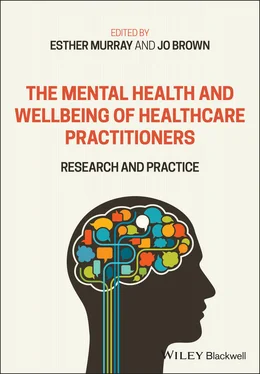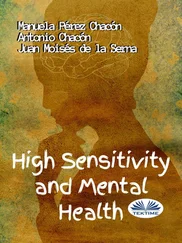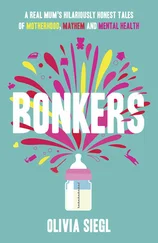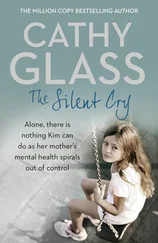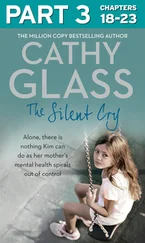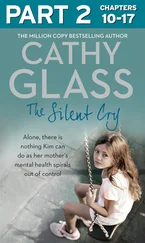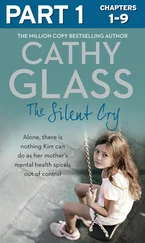The Mental Health and Wellbeing of Healthcare Practitioners
Здесь есть возможность читать онлайн «The Mental Health and Wellbeing of Healthcare Practitioners» — ознакомительный отрывок электронной книги совершенно бесплатно, а после прочтения отрывка купить полную версию. В некоторых случаях можно слушать аудио, скачать через торрент в формате fb2 и присутствует краткое содержание. Жанр: unrecognised, на английском языке. Описание произведения, (предисловие) а так же отзывы посетителей доступны на портале библиотеки ЛибКат.
- Название:The Mental Health and Wellbeing of Healthcare Practitioners
- Автор:
- Жанр:
- Год:неизвестен
- ISBN:нет данных
- Рейтинг книги:3 / 5. Голосов: 1
-
Избранное:Добавить в избранное
- Отзывы:
-
Ваша оценка:
- 60
- 1
- 2
- 3
- 4
- 5
The Mental Health and Wellbeing of Healthcare Practitioners: краткое содержание, описание и аннотация
Предлагаем к чтению аннотацию, описание, краткое содержание или предисловие (зависит от того, что написал сам автор книги «The Mental Health and Wellbeing of Healthcare Practitioners»). Если вы не нашли необходимую информацию о книге — напишите в комментариях, мы постараемся отыскать её.
Explore this innovative new volume covering the growing mental health crisis amongst healthcare practitioners The Mental Health and Wellbeing of Healthcare Practitioners
The Mental Health and Wellbeing of Healthcare Practitioners
The Mental Health and Wellbeing of Healthcare Practitioners — читать онлайн ознакомительный отрывок
Ниже представлен текст книги, разбитый по страницам. Система сохранения места последней прочитанной страницы, позволяет с удобством читать онлайн бесплатно книгу «The Mental Health and Wellbeing of Healthcare Practitioners», без необходимости каждый раз заново искать на чём Вы остановились. Поставьте закладку, и сможете в любой момент перейти на страницу, на которой закончили чтение.
Интервал:
Закладка:
Burnout:The concept of burnout was described by Christine Maslach in 1981 [5], as ‘a psychological syndrome of emotional exhaustion, depersonalisation and reduced personal accomplishment’ which can be the result of work demands which are principally relational in nature and where there is no opportunity to recharge. The term was developed to capture the experience of any person who worked ‘in an intense involvement’ with others, rather than those specifically in helping professions, this includes the criminal justice system and education. The result for workers is the sense that they are unable to do a good job, but also a disengagement from the people they had set out to serve, meaning that they are unable to access the potential good feelings which could be part of working with people. The concept is now very widely used in healthcare, a Google Scholar search in September 2020 of ‘burnout healthcare professionals’ returns 330 000 results.
Moral Distress:this concept was outlined by Jameton in 1984 in his book ‘Nursing Practice: the ethical issues’ [6] and refers to the effects of knowing what should be done for a patient, but being unable to do it because of situational and organisational constraints such as lack of time, staff or equipment. Most of the research in moral distress relates to nursing practice. The concept is of interest in this chapter since it highlights the relationship between organisational issues and personal, moral issues. This allows us to think of the healthcare professional's own agency in the workplace. Later work shows that to thrive at work, people need a sense of autonomy, belonging and competence and that this is as true for healthcare workers as for anyone else [7].
Secondary Trauma:refers to the stress experienced by helping those who have been traumatised. It is now listed in the Diagnostic and Statistical Manual of the American Psychiatric Association 5th Edition (DSM‐5) as a potential aetiology for post‐traumatic stress disorder ( PTSD ) (see below). This is an important development because it shows that there is a recognition of the powerful negative effects of helping work now. It would produce symptoms like hyperarousal, avoidance, intrusive thoughts and depression and anxiety type symptoms [8] and its effects have been explored in various professions, including healthcare.
Vicarious Trauma:describes the trauma that occurs from hearing the traumatic events that another has suffered, or in other ways being exposed to this trauma, including, one might assume, treating their physical injuries [8].
Note: The terms ‘vicarious trauma’ and ‘secondary trauma’ tend to be used exclusively from one another, sometimes the term secondary trauma is used to describe the after‐effects of a primary trauma, for example, the loss of employment or relationship subsequent to primary trauma (such as domestic violence, violent crime, terrorism etc.).
Post‐traumatic stress disorder (PTSD):this is a mental disorder that results from exposure to traumatic events that threaten the self or others [9]. The disorder is listed in the DSM‐5 [10] and the symptoms include: intrusive memories and flashbacks, sleep disturbance, avoidance of places, people or things which remind the person of the event, possible dissociative symptoms, irritability, self‐destructive behaviour and so forth. These symptoms need to have lasted for a month or more in order to meet diagnostic criteria. The inclusion, in the DSM‐5, of PTSD caused by threats to others as well as self, recognises the effects of working as, for example, an emergency responder or in other areas where there is exposure to accidents and acts of violence, while not necessarily being the target of these acts of violence. The revised definition also recognises that one of the symptoms of PTSD will be persistent negative appraisals of the world, the self and the future [11].
Post‐traumatic Growth:the idea that people can grow and develop as a result of adverse circumstances is not a new one and much has been written on the topic, especially by positive psychologists such as Maslow, Caplan and Csikszentmihalyi. Since the 1980s and 1990s much more research has been undertaken to explore this idea in a variety of areas such a bereavement, illness and accidents [12]. It describes profound transformative changes in relation to quite serious trauma, not just a resilience to these or maintenance of baseline wellbeing. It is an important consideration in a book about the mental health and wellbeing of healthcare practitioners given the likelihood of their exposure to traumatic events is so much greater.
Moral Injury:Moral injury, then, has been described in two ways, firstly, by Jonathan Shay as: the betrayal of what's right by someone who holds legitimate authority, in a high stakes situation [13] and as the result of: ‘perpetrating, failing to prevent, bearing witness to or learning about acts that transgress deeply held moral beliefs or expectations’ [14]. Shay's observations of veterans recovering from their experiences in the theatre of war highlighted the tenacious nature of the emotional reactions to these experiences. He spoke of their struggles to recover from the events which had rocked their view of themselves and of the world; even though they had undergone effective, evidence‐based treatments for PTSD. Processing of events that he came to understand as morally injurious could only take place in peer groups where experiences among veterans were similar. Shay recognises his role as an outsider, conceptualising himself only as a facilitator of these discussions between people ‘who know’.
The morally injurious event might take many forms, and indeed there is ongoing research to understand exactly what might constitute a morally injurious event (Journal of Traumatic Stress Special Issue June 2019), certainly the people I spoke to about my research had their own ideas about what was morally injurious for them. The resultant symptoms tend to follow a pattern, though, and this revolves mostly around shame and guilt, with their concomitant withdrawal from social networks. There are parallels with some of the aspects of guilt and disruption to world view which are now described in the latest iteration of the PTSD criterion and symptoms in the DSM‐5 but in moral injury the source of this guilt and shame is different. Cognitive models of PTSD conceptualise the symptoms as the result of the interactions of the mind with extreme fear, that is, the world is appraised as an unsafe place in which terrible things can happen, the concept of moral injury suggests that the mechanism of action might be more closely related to feelings and thoughts about shame and guilt, that is, the world is a wrong place, in which terrible things are allowed to happen. The guilt and shame felt as a result of moral injury will not automatically extinguish over time if emotions are not effectively processed, researchers point out [15].
It may be that morally injurious events disrupt our individual worlds such that our attempts at meaning making fail and we are unable to resolve the cognitive dissonance we experience. Of course, assimilating events is part of our maturation as humans, but it seems that some events cannot be ‘squared away’ as easily as others. Possibly the painful realisation of the wrongness of the world, and maybe ourselves in it, is extremely isolating. Certainly, feelings of guilt and shame tend to make us close off from our feelings, maybe by numbing them with food, drugs, alcohol or work, maybe by intellectualising our experience to the point where emotion is no longer present, but also by blaming others, by expressing anger (in lieu of sadness) all of these mean that we do not allow ourselves to access our individual experience of pain, sorrow and regret and thus do not move through it. As well as our individual experiences, we have our relationships with others which are also disrupted by moral injury.
Читать дальшеИнтервал:
Закладка:
Похожие книги на «The Mental Health and Wellbeing of Healthcare Practitioners»
Представляем Вашему вниманию похожие книги на «The Mental Health and Wellbeing of Healthcare Practitioners» списком для выбора. Мы отобрали схожую по названию и смыслу литературу в надежде предоставить читателям больше вариантов отыскать новые, интересные, ещё непрочитанные произведения.
Обсуждение, отзывы о книге «The Mental Health and Wellbeing of Healthcare Practitioners» и просто собственные мнения читателей. Оставьте ваши комментарии, напишите, что Вы думаете о произведении, его смысле или главных героях. Укажите что конкретно понравилось, а что нет, и почему Вы так считаете.
